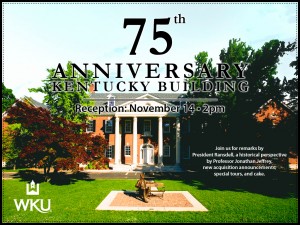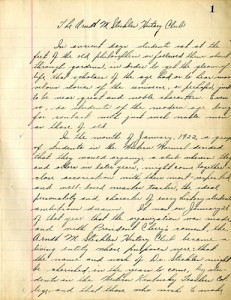Tag Archives: History
Out of the Box – November
Comments Off on Out of the Box – November
Filed under University Archives
Focus On Special Collections
Kentucky Ancestors is a publication of the Kentucky Historical Society which features article topics appealing to family historians of all levels. They have ‘How-To’, Case Studies, and individual family histories as well as Book Notes, stories and commentary. They focus on content related to Kentucky families and locations, as well as those areas from which many Kentuckians migrated. The resource is no longer issued in print but is freely available online. A new feature for the magazine is “Repository Roundup.” They note that “Kentucky has a great reputation for being ‘Records Rich’ – but we want to know WHERE the records are located throughout the state.” We were pleased that the Special Collections Library was chosen as the first library to be featured for this new series. Family historians and other patrons from around the United States and the world visit to see and use the many “books, manuscripts, maps, photographs, audio, video, and other material documenting the history, politics, culture, literature, daily life and folkways” of the families of the Commonwealth and beyond. The article featuring the Special Collections library is available at http://kentuckyancestors.org/repository-roundup-western-kentucky-university/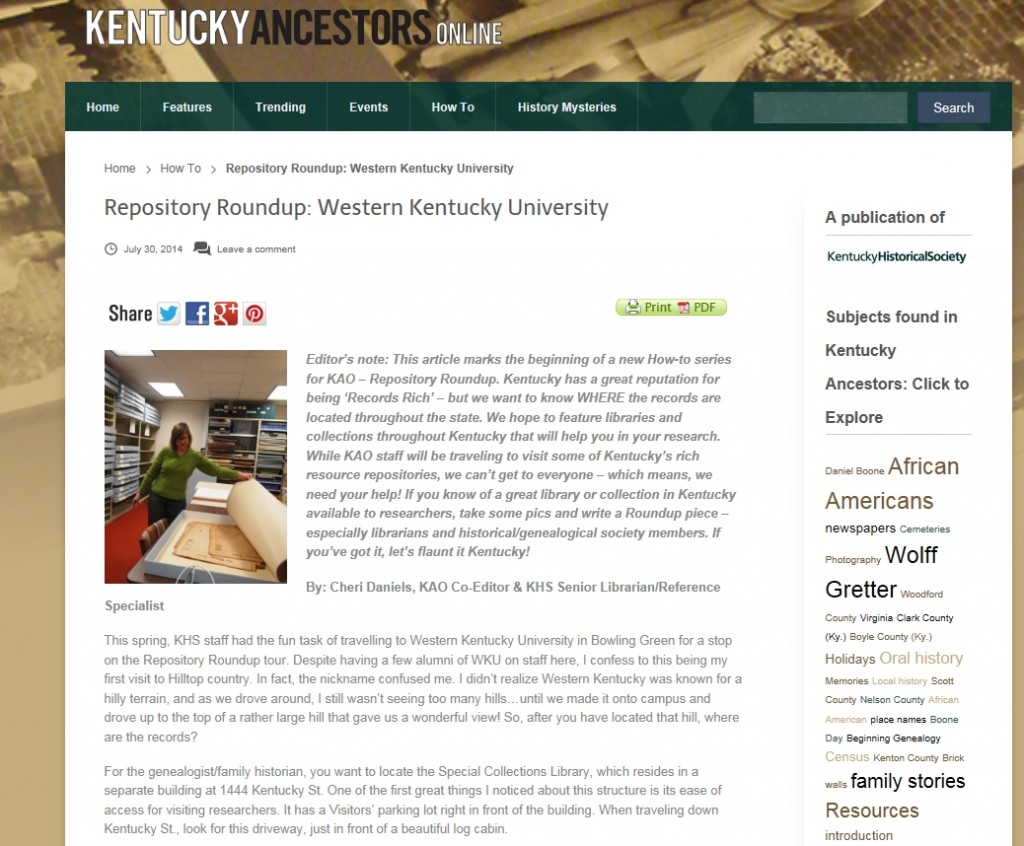
Comments Off on Focus On Special Collections
Filed under New Stuff
Family Bibles
Each year the Kentucky Library Research Collection receives many valuable donations. Recently, we received a Woolsey Family Bible. The bible was an 1887 “Peerless” Edition of the Parallel Bible: containing the Authorized and Revised versions of the Old and New Testaments, arranged in parallel columns; a complete concordance; with a comprehensive Bible dictionary. Since one of our collecting strengths is genealogical, we greatly appreciated the marriages, births and deaths that were included starting with Sanford C. Woolsey and Angie Smith and their children. This genealogical information about this specified family also included photographs which made the bible even more unique. One of the marriages noted was also performed at Historic Diamond Cave in Park City, KY.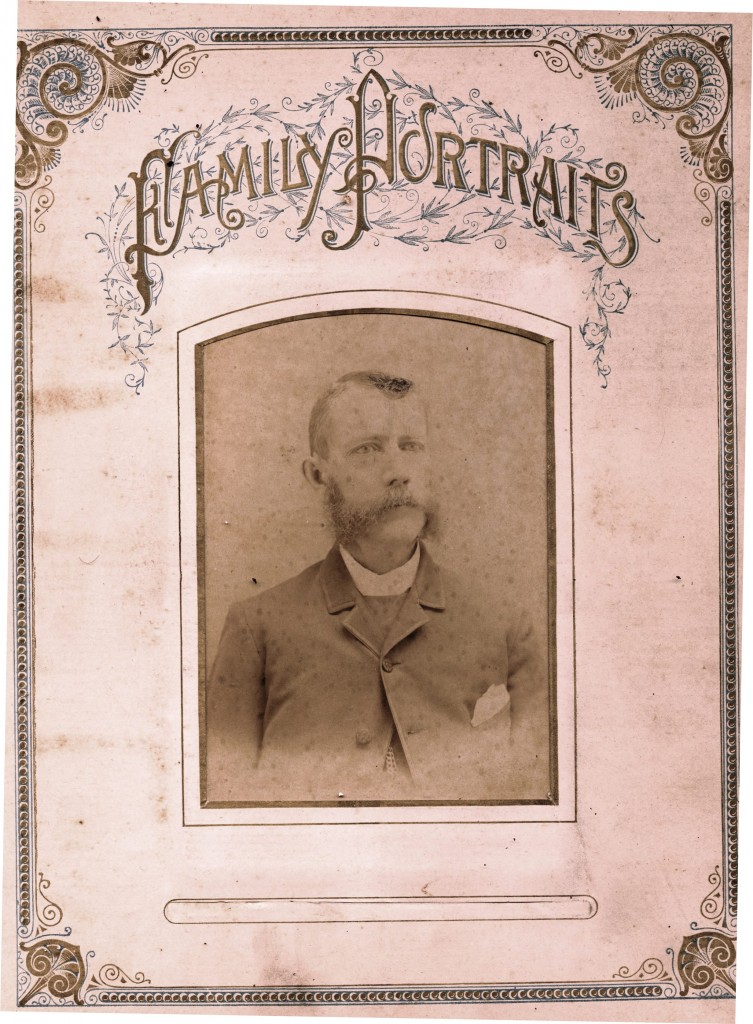
Family bibles were very important before the advent of official government records. Even many non-religious families chose to use a family Bible as a record keeper. These bibles were sold in stores, by mail order and by door-to-door salesmen. The selling factor was not the holy scriptures but the blank pages between the Old and New Testaments that were waiting to be filled in with names, dates of births, marriages and deaths. This may have been the only record of such important dates in the lives of our ancestors and may give us that elusive maiden name and include other information such as baptismal information or names of godparents. The bibles also became the repository for numerous keepsakes such as newspaper clippings, funeral cards, pressed flowers, and other items that were valuable or meaningful to the owner. Please see KenCat for a listing of our family bible holdings.
Meetings, Meetings, Meetings
We have been processing and posting meeting minutes of all kinds. There are University Senate minutes, Congress Debating Club minutes, departmental faculty meeting minutes, Stickles History Club minute books and FCG Classical Club to name a few.
WKU minute takers have done a great job in relaying accurate information to us. They have also found and recorded humor in their meetings. Here are a few examples:
Congress Debating Club, Book 4, page 279
Senator Searcy blew his breath at the crowd and at the same time his vocal chords vibrated in an unintelligble manner.
On page 290 of the same book we find a notation that the previous minutes are an “unhealthy bit of propaganda.”
In a memo addressed to the History faculty April 29, 1977, Dr. Richard Troutman outlines a number of meetings as:
The first meeting will involve consideration of two proposals from the Departmental Curriculum Committee . . .
The meeting following the first meeting should be brief and will involve a continuation of our discussion on graduate assistants.
The meeting following the brief meeting which follows the longer meeting will concern my concern about what direction the Department should take as we seek a new teacher for next year. This meeting should take longer than the brief second meeting, but perhaps not as long as the longer first meeting. But then again, it may take longer.
History faculty meeting minutes have begun “Once upon a time” and ended “. . . and they all lived happily ever after.”
A belated but slight reminder of things past . . . !
As quickly as was humanly possible, Dr. Crowe adjourned the meeting. Deferentially yielded, crowe the younger
The Sept. 19, 1974 meeting minutes open: “This is the Way it Was . . . !” and conclude with:
If there are any questions as to particulars mentioned in this monsterpiece, check with the man who keeps a pad in his shirt pocket. His note-taking ability far surpasses anything done by ‘little old me, honey.’
[signed] Scarlott O’Crowe
This image from the Arndt Stickles History Club Minute Book 1, page 4 relates the seriousness of manner in which the members organized:
In ancient days students sat at the feet of the old philosophers or followed them about through gardens, in order to get the gleam of life that scholars of the age had or to hear marvelous stories of the universe, or perhaps, just to be near great and noble characters. Even so, do students of the modern age long for contact with just such noble men as those of old.
These and many more records are available for researchers in WKU Archives.
Comments Off on Meetings, Meetings, Meetings
Filed under University Archives
Panama Canal Pedro Miguel Locks
 When the Panama Canal opened to traffic 100 years ago on Aug. 15, 1914, it was a great feat of innovation and skill and connected the world’s two largest oceans. The opening event drew many news outlets and photographers. Its appeal has continued throughout the years as evidenced by this photograph produced by the Galloway Company of New York. Native Kentuckian, Ewing Galloway (1881-1953) who was born in “Little Dixie,” in Henderson, started his career as a lawyer and city prosecutor. In 1920, he opened his own photographic company which would become the largest stock photograph agency in the United States. His studio trained many photographers who traveled worldwide taking images that focused on native peoples, transportation and commerce. The agency today has photographic image holdings that amount to over four hundred thousand. In 1937, Galloway donated nearly 1000 photographs to the Kentucky Library. The photographs cover a wide variety of national and international themes. The image shown here showcases the Panama Canal’s Pedro Miguel Locks, with Gaillard Cut (formerly Culebra) in the distance, and features a large steamship leaving one of the locks for Miraflores on to the Pacific.
When the Panama Canal opened to traffic 100 years ago on Aug. 15, 1914, it was a great feat of innovation and skill and connected the world’s two largest oceans. The opening event drew many news outlets and photographers. Its appeal has continued throughout the years as evidenced by this photograph produced by the Galloway Company of New York. Native Kentuckian, Ewing Galloway (1881-1953) who was born in “Little Dixie,” in Henderson, started his career as a lawyer and city prosecutor. In 1920, he opened his own photographic company which would become the largest stock photograph agency in the United States. His studio trained many photographers who traveled worldwide taking images that focused on native peoples, transportation and commerce. The agency today has photographic image holdings that amount to over four hundred thousand. In 1937, Galloway donated nearly 1000 photographs to the Kentucky Library. The photographs cover a wide variety of national and international themes. The image shown here showcases the Panama Canal’s Pedro Miguel Locks, with Gaillard Cut (formerly Culebra) in the distance, and features a large steamship leaving one of the locks for Miraflores on to the Pacific. 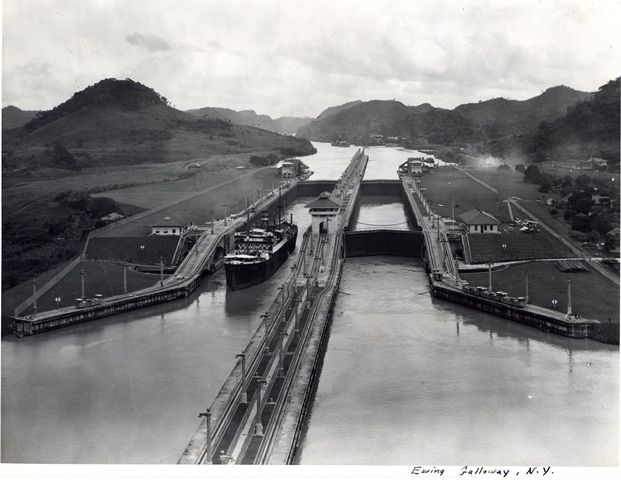
April Out of the Box
Bill 85-10-F Changing Intersection
Presidential Search Committee, 1997
Preston Health & Activities Center
Unidentified Photos – just say yes
Comments Off on April Out of the Box
Filed under University Archives
Health Clinic Reports
It’s flu season again. Regardless of the time of year the WKU Clinic sees patients all year round. In January 1964 the Western Clinic administered the following:
- 51 allergy immunizations
- 50 doses of insulin
- 92 respiratory system treatments
- 19 gastro-intestinal treatments
- 7 nervous system treatments
- 9 bones, joints & muscle treatments
- 49 accidents
- 15 eye, ear, nose, etc. treatments
- 17 wounds dressed
- 39 consultations
- 1 case of scarlet fever
- 3 cases of red measles
- 18 infirmary patients
- 36 students advised to see a physician
The entire year’s reports are available to researchers online at: http://digitalcommons.wku.edu/dlsc_ua_records/1852/
Stay warm and healthy!
Comments Off on Health Clinic Reports
Filed under University Archives
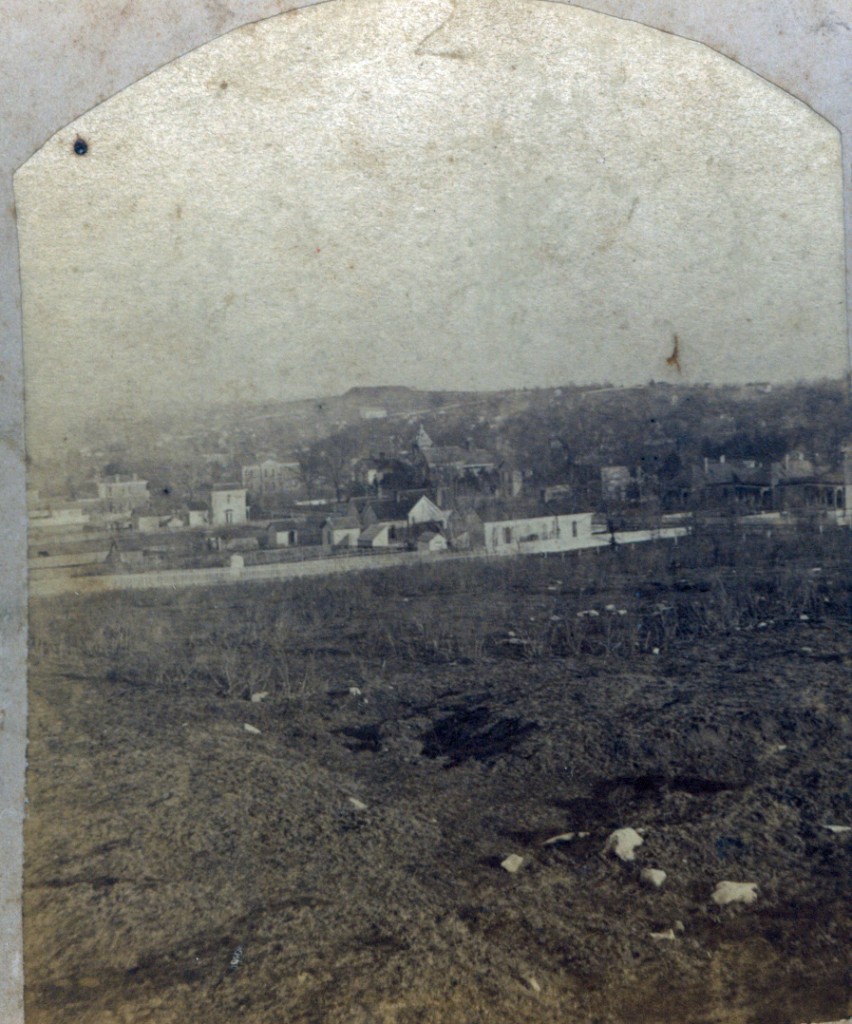 A recent donation of 11 stereographic cards opens up a view of early Bowling Green, KY. These images are from 1886 and show downtown Bowling Green, the Barren River, an early school, the Fairview Cemetery, Southern Normal School, Main and State Streets and two bridges. Many of these albumen images have not been seen before. Stereographs like these were a vehicle for popular education and entertainment in the latter part of the nineteenth century. These images were mounted on cardboard with two almost identical photographs, side by side, and they had to be viewed with a stereoscope. Viewing them in this way created a three-dimensional effect. These images gave an opportunity for many to see views of far-away lands in a way that was not available to the general population. Their affordability and easy availability also made stereography a popular pastime that lasted over six decades. See other images of Bowling Green, KY by using KENCAT at kencat.wku.edu
A recent donation of 11 stereographic cards opens up a view of early Bowling Green, KY. These images are from 1886 and show downtown Bowling Green, the Barren River, an early school, the Fairview Cemetery, Southern Normal School, Main and State Streets and two bridges. Many of these albumen images have not been seen before. Stereographs like these were a vehicle for popular education and entertainment in the latter part of the nineteenth century. These images were mounted on cardboard with two almost identical photographs, side by side, and they had to be viewed with a stereoscope. Viewing them in this way created a three-dimensional effect. These images gave an opportunity for many to see views of far-away lands in a way that was not available to the general population. Their affordability and easy availability also made stereography a popular pastime that lasted over six decades. See other images of Bowling Green, KY by using KENCAT at kencat.wku.edu
Comments Off on Seeing Bowling Green in Stereo
October 10, 2013 · 7:55 pmJuly Cool Stuff
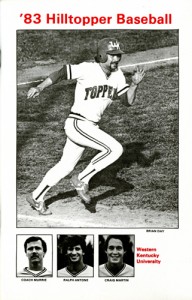 Baseball – Objects, photographs and documents related to WKU and College High baseball teams.
Baseball – Objects, photographs and documents related to WKU and College High baseball teams.
Board of Regents Special Meeting 11/7/1938 – 75 years ago – construction of the Kentucky Building
Cardinal Yearbook – Ogden College yearbook is 100 years old
College Heights Herald 7/22/1968 – summer theater, ETV Network & Shaker pageant
Eleavator 7/1913 – WKU’s bimonthly publication
Fanlight, 1988 – Kentucky Museum happenings from 25 years ago
Forensic Story – transcript of audiotape regarding the establishment of the William Biven Forensic Society
John Minton – 5th president of WKU
Marion Humphrey – alumni papers
Recitation Hall – building history and documentation
Resolution 88-10-S – Unicorn Pizza & Theater open on weekends
Southern Normal School – collection inventory
Comments Off on July Cool Stuff
Filed under University Archives
Oh, The Places You Can Go…..Through Photographs
Maurice K. Gordon was born in Hopkins County, Kentucky in 1878. He saw service in World War 1, achieving the rank of major and returned to Madisonville, KY where he worked as an attorney. Gordon was very involved with the American Legion and was a world traveler. He was also an avid collector of books, manuscripts and autographs many of which were purchased by the Kentucky Library/Special Collections after Gordon’s death in 1974. One of the most interesting acquisitions from this purchase was one of Gordon’s photograph albums (partial) that show his travels in the Mediterranean area, Western Africa and Israel. One horrific photograph (not identified) shows the loss of life and destruction of war. The Special Collections library holds many photographic images with global perspectives some of which may be seen by searching KenCat.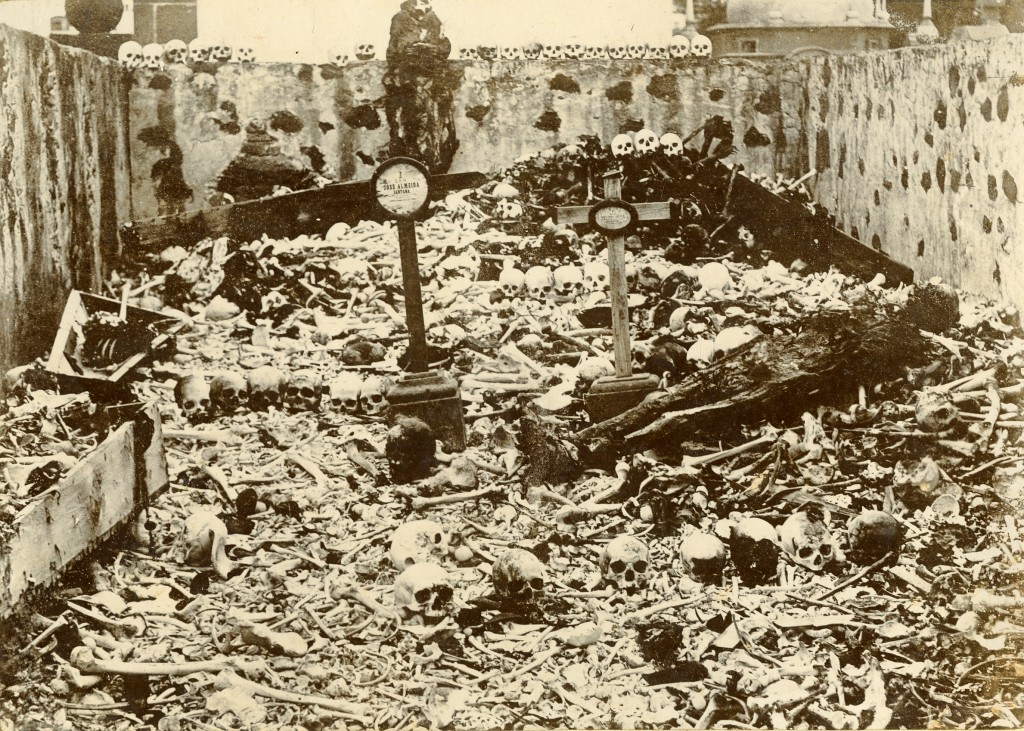

Comments Off on Oh, The Places You Can Go…..Through Photographs
Filed under Acquisitions

